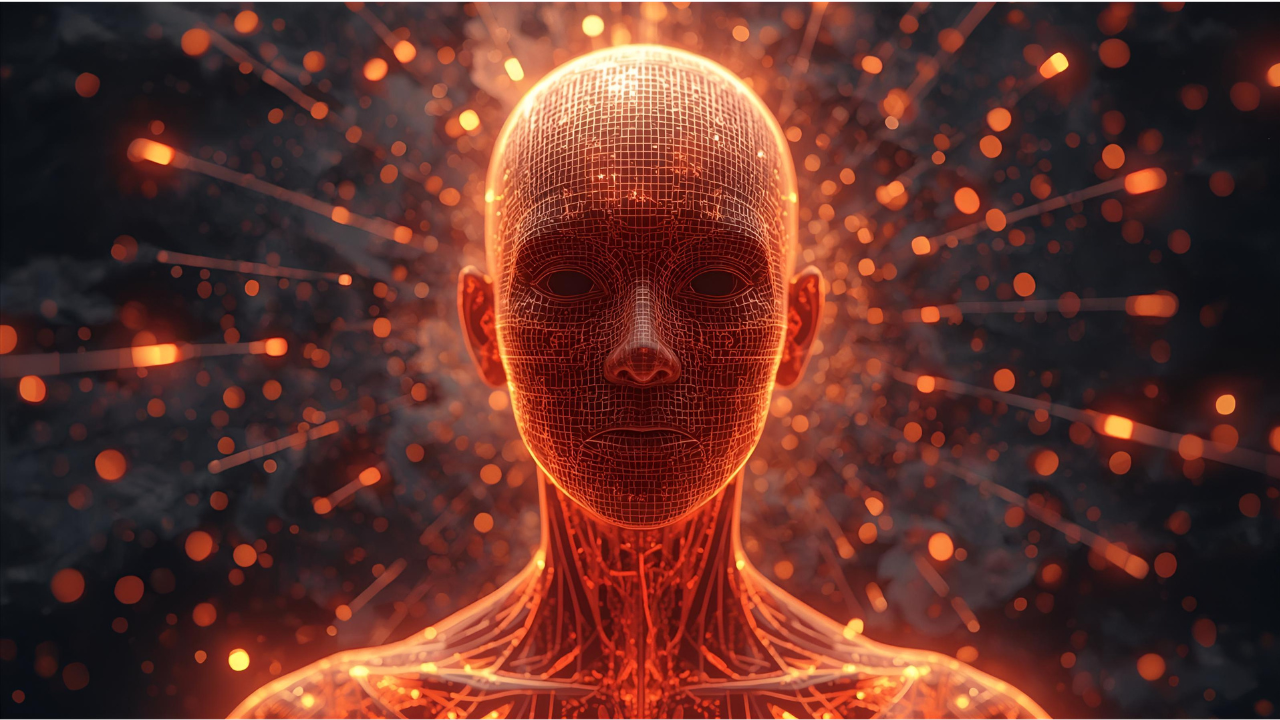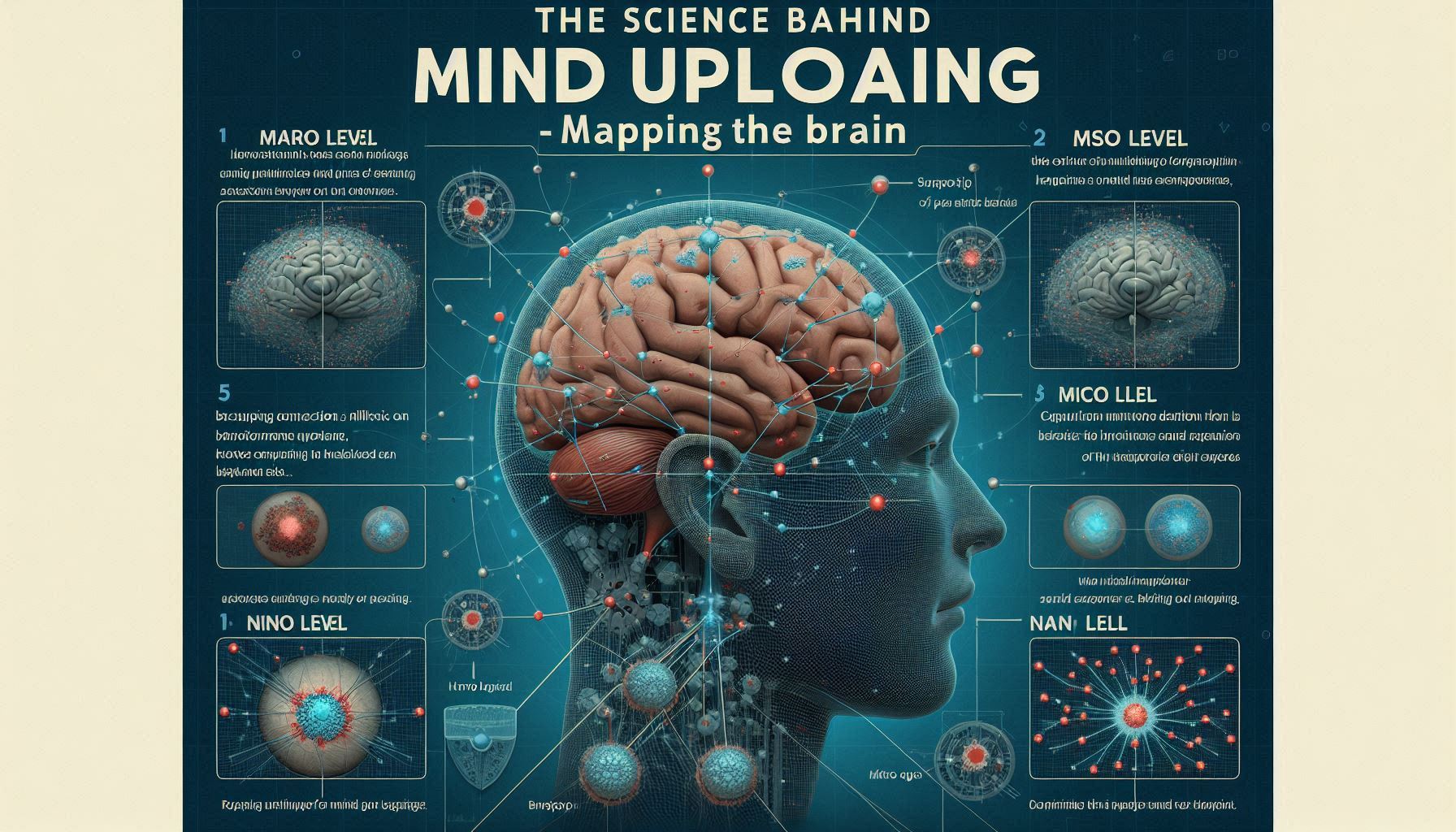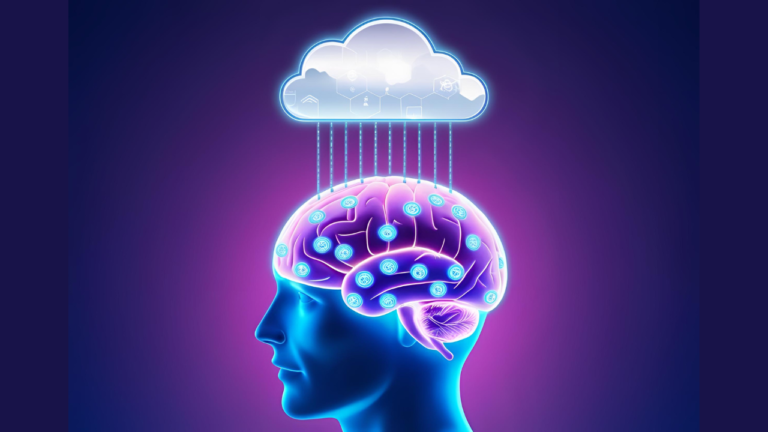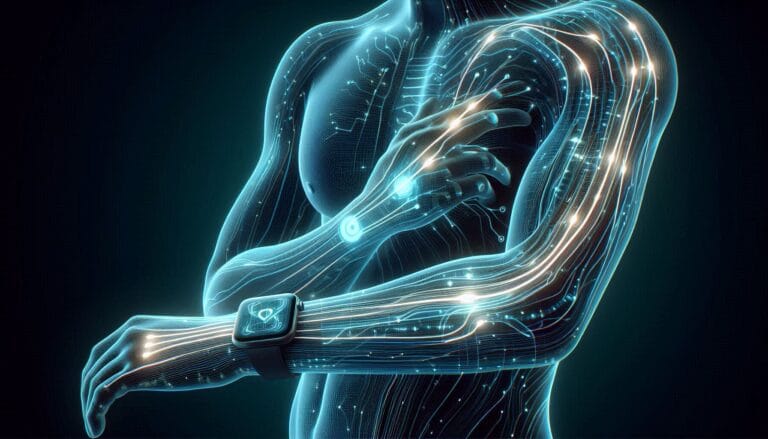Introduction — What People Mean by “Digital Immortality”
For centuries, humans have dreamed of escaping death. Today, that dream is reimagined through the idea of digital immortality—the possibility of living forever in digital form. Instead of physical longevity, this concept revolves around preserving the mind, memories, and personality in a virtual medium.
Digital immortality is not a single technology but a spectrum. At the simplest level, it might mean creating avatars that mimic your behavior based on past conversations, texts, and photos. A step further is data emulation, where algorithms replicate your thought patterns for digital interaction. The most ambitious—and most debated—vision is mind uploading, the theoretical process of transferring the brain’s entire neural structure into a computer, enabling consciousness to continue in a digital realm.

Some startups are already exploring aspects of the digital afterlife. Companies have launched services that create AI-driven chatbots from a deceased person’s social media history, allowing loved ones to “talk” to them after death. While these are limited forms of digital presence, they hint at a future where advanced brain emulation could blur the boundary between memory and consciousness.
Academic and cultural discussions highlight both fascination and skepticism. According to Wikipedia, the term bridges speculative science, ethics, and transhumanist philosophy. Georgia Tech researchers note the ethical dilemmas of preserving digital selves, while outlets like LAist report on the growing business of digital afterlife services.
Ultimately, digital immortality raises one of humanity’s biggest questions: can technology not just extend life, but truly allow us to live forever?
Short History & Cultural Roots
The idea of digital immortality may sound futuristic, but its roots run deep in human culture. Since ancient times, people have searched for ways to preserve existence beyond death—through myths of eternal life, religious beliefs in the soul, or physical practices like mummification. Fast forward to the 20th century, and these ideas evolved into cryonics, the preservation of the body or brain in hopes of future revival.
The modern conversation shifted with the rise of transhumanism. Thinkers like Ray Kurzweil and Nick Bostrom argued that technology could radically extend human life. For them, mind uploading was not just science fiction but a plausible long-term outcome of advances in neuroscience, artificial intelligence, and computing power. These visions fueled interest in the possibility of separating consciousness from biology.
Popular culture amplified these ideas. Films like Transcendence and series like Black Mirror dramatized scenarios where people live on as digital entities, raising questions about identity, memory, and authenticity. Even in experimental projects, such as early “deadbot” chatbots that simulated deceased users from their text histories, society has begun testing the boundaries of digital self-preservation.
Some ventures pushed further, like Nectome, a startup promising brain cryopreservation with the aim of future revival through computational models. The project sparked controversy, especially around the ethics of preserving a brain for an uncertain technological future. Still, it demonstrated the seriousness with which some scientists and entrepreneurs are approaching the path to digital immortality.
This mix of mythology, philosophy, pop culture, and emerging science illustrates that the dream of digital existence is both ancient and evolving. Whether it leads to mind uploading or remains metaphorical, the quest reflects humanity’s timeless struggle against mortality
The Science Behind Mind Uploading — What Must Be Done
Turning mind uploading from science fiction into reality is one of the most ambitious challenges of neuroscience and computer science. To achieve digital immortality mind uploading, researchers would need to recreate the brain’s vast complexity across multiple levels—from large-scale structures to the tiniest synaptic details.

Mapping the Brain
The first step in mind uploading is mapping the brain across different scales:
- Macro level: identifying brain regions (like cortex, hippocampus) and their functions.
- Meso level: mapping neural circuits that govern specific behaviors or memories.
- Micro level: capturing the interactions of millions of individual neurons.
- Nano level: recording synaptic connections and neurotransmitter dynamics with atomic precision.
The holy grail is a complete connectome—a detailed map of all neural connections. But connectivity alone isn’t enough; researchers must also capture neural dynamics, such as how electrical signals, chemical processes, and oscillations encode thought and memory. Without this, even a perfect map could not support functional digital immortality mind uploading.
Scanning Technologies
To capture the brain at such depth, advanced imaging tools are being explored. Electron microscopy connectomics provides ultra-high-resolution slices of brain tissue, revealing synaptic wiring. While effective, it generates petabytes of data for just a cubic millimeter of brain tissue.
Other approaches include high-resolution brain imaging with techniques like fMRI, which tracks blood flow to infer brain activity, and two-photon microscopy, which allows observation of living neurons in action. Each method has strengths, but none can yet combine resolution, scale, and speed to map an entire human brain.
A major bottleneck is data volume. Storing and analyzing the petabytes—or even exabytes—required for full-brain emulation is beyond today’s systems. This highlights why mind uploading and digital immortality remain long-term goals rather than near-term realities.
Simulation & Emulation
Once brain data is captured, the next challenge is simulation. Two approaches dominate:
- Spiking neural networks, which mimic how real neurons send discrete electrical pulses.
- Simplified models, which abstract brain functions into computationally manageable systems.
Both approaches demand immense computing power. Experts estimate that exascale computing or neuromorphic chips—hardware designed to mimic the brain’s architecture—may be required to emulate the human brain in real time.
Yet limitations remain. Neural activity is influenced not just by connections but also by biochemistry, hormones, and even glial cells, which are often overlooked in models. Without these layers, any emulated brain may be incomplete or fundamentally different from human consciousness.
Despite these hurdles, advances in AI and supercomputing keep the possibility alive that mind uploading could one day achieve digital immortality.
Practical Forms of Digital Immortality Today
While full digital immortality through brain uploading is still speculative, practical versions already exist in emerging technologies.
One of the most visible is AI avatars—chatbot-style recreations of deceased loved ones. These avatars use personal texts, emails, and social media histories to create a conversational likeness. While far from consciousness, they provide a powerful form of digital afterlife that comforts grieving families.
Similarly, companies are developing memory-based digital personas. By combining multimedia data—voice recordings, photos, and written content—these systems create a living archive of an individual’s personality. These digital doubles can continue to “interact” long after death, offering a glimpse of how digital afterlife services could evolve.
![]()
Meanwhile, on the medical front, early neural prosthetics such as memory chips and brain-computer interfaces represent partial integrations between human cognition and machines. While not yet full emulation, these technologies point toward a future where biological and digital selves merge.
Taken together, these examples show that while complete digital immortality is distant, the digital afterlife is already being shaped by technology. Over time, these incremental steps could evolve into more profound forms of digital existence.
How Far Are We From Digital Immortality?
The question “how far are we from digital immortality?” has fascinated scientists, futurists, and everyday people alike. While movies often suggest it’s just around the corner, reality is far more complex. Researchers generally agree that digital immortality is not a single breakthrough but a gradual evolution unfolding in phases.
Short Term (0–5 years):
In the near future, the most tangible progress comes from digital avatars, chatbots, and personal AIs. Using text, video, and voice data, these systems create a digital afterlife by preserving an individual’s personality and communication style. These tools cannot replicate true consciousness but provide a way for people to “live on” in digital form.
Medium Term (5–25 years):
Over the next few decades, we may see animal connectome emulations, where scientists map and digitally recreate simpler nervous systems, such as worms, flies, or even mammals. Alongside this, hybrid systems—like brain-computer interfaces (BCIs)—will increasingly blend biological and digital intelligence. While still far from whole-brain emulation, these advances could represent stepping stones toward digital immortality.
Long Term (25+ years):
The ultimate goal is whole-brain emulation, often referred to as mind uploading. This would involve scanning a human brain at nanometer resolution, capturing every synapse and signal pathway, and recreating it inside a powerful computer. If successful, it could deliver true digital immortality, allowing a digital version of the self to exist indefinitely.
Expert Skepticism:
Despite the optimism, many neuroscientists stress that consciousness is not yet understood at a fundamental level. Even if we could map the brain perfectly, it’s unclear whether a simulation would generate subjective experience or simply mimic behavior. This makes the timeline for digital immortality uncertain, and perhaps even unattainable.
So, how far are we from digital immortality? The short answer: parts of it are already here in basic forms, but complete mind uploading could be many decades—or even centuries—away.
Who’s Working On It? Companies, Labs, Startups
Behind the headlines, multiple organizations are actively exploring pathways toward digital immortality and even mind uploading. These efforts range from brain preservation to neuromorphic computing.
- Nectome — A U.S.-based startup focused on brain preservation. Their controversial cryonics-inspired method aims to chemically preserve the connectome for potential future uploading. While not practical today, it highlights the belief that preserving brain structure is the first step toward digital immortality.
- AI Memorial Startups — Several companies offer “digital afterlife” services by creating AI-powered avatars from personal data. These services, sometimes called deadbots, don’t involve true mind uploading but give families and researchers an early glimpse into digital preservation of identity.
- The Human Connectome Project — A large-scale academic initiative mapping neural pathways across the human brain. Understanding connectivity is essential for digital immortality mind uploading, as it provides the blueprint for digital emulation.
- Neuromorphic Computing Labs — Research teams worldwide, including at Intel, IBM, and European Union projects, are developing neuromorphic chips that mimic brain architecture. These are critical for the immense computing demands of mind uploading and future digital immortality systems.
Together, these groups are piecing together the puzzle of how humans might one day transcend biological limits. While no single player has a complete solution, the combined momentum of neuroscience, AI, and computing continues to bring the vision of digital immortality closer.
Ethics, Law & Society
The pursuit of digital immortality forces us to confront some of the most profound ethical, legal, and social questions in human history. If mind uploading or other forms of consciousness preservation become possible, society will need entirely new frameworks to address issues of personhood, rights, and fairness.
Personhood and Identity
A central dilemma is whether a digital copy is truly “you.” If your memories, behaviors, and even emotions can be simulated, does that entity share your identity—or is it merely a convincing replica? Philosophers compare this to the “teleporter paradox,” where continuity of consciousness may break even if information is perfectly preserved. Digital immortality challenges centuries-old notions of what it means to be human.
Rights of Digital Minds
If mind uploading produces conscious digital beings, should they be granted legal rights? Could they own property, sign contracts, or demand autonomy? Without clear legal protections, uploaded minds could be exploited as digital labor or dismissed as non-persons. This raises a potential future conflict between biological humans and their digital counterparts.
Data Privacy & Misuse
The road to digital
immortality depends on capturing immense volumes of personal data—voice, video, messages, medical scans, and even neural recordings. This creates risks of hacking, misuse, or posthumous exploitation. A digital version of someone could be manipulated for commercial or political purposes, undermining both personal dignity and social trust.
Inequality of Access
Technologies like mind uploading may only be available to the wealthy, creating a society where elites could “live forever” digitally while others face mortality. Such disparities could exacerbate existing social divides, raising justice and fairness concerns.
Regulatory Proposals
Scholars and policymakers have begun suggesting ethical frameworks for digital immortality, including consent protocols, “digital will” laws for posthumous data, and possible recognition of digital entities under law. Some propose international governance similar to bioethics standards, given the global impact of this technology.
Ultimately, the quest for digital immortality is not just a scientific problem but a societal one. Balancing innovation with human values will determine whether these technologies enhance humanity—or fracture it.
Technical & Philosophical Objections
Even if technology advances, many researchers argue that mind uploading may never deliver true digital immortality. The obstacles are not only technical but deeply philosophical.
The Hard Problem of Consciousness
Science has yet to explain how subjective experience arises from neural activity. Without solving this, even a perfect brain simulation might lack “awareness,” functioning only as a behavioral mimic.
Computational Sufficiency
Critics question whether simulating neural activity in silicon is enough to recreate consciousness. A system could act human-like without experiencing thoughts or feelings. This challenges the assumption that digital immortality equals lived experience.
Substrate Dependence
Some philosophers argue that consciousness may depend on the biological substrate of neurons and chemistry, not just information patterns. If true, then no matter how advanced, mind uploading may never reproduce the essence of human life.
Identity Continuity
Even if uploading works, does the copy truly “continue” your existence? Or does your original consciousness end at death, leaving only a duplicate? This continuity problem undermines whether digital immortality is genuine survival or simply replication.
Together, these objections remind us that mind uploading is not merely a technical challenge—it questions the very foundations of what consciousness and identity mean.
What Students & Researchers Can Do Now
For students, researchers, and curious readers, the path to digital immortality isn’t science fiction alone—it’s an active area of exploration with opportunities to engage today.
Suggested Reading
To understand the foundations, begin with literature on connectomics (the mapping of neural connections) and neuroethics (the moral questions around brain emulation). Classic works by Nick Bostrom, Anders Sandberg, and contemporary neuroscience papers give a strong grounding in both technical and philosophical debates surrounding mind uploading.
Public Datasets
Projects like the Human Connectome Project, OpenWorm (a complete simulation of a worm’s nervous system), and open EEG/MEG databases offer accessible data. Exploring these allows students to practice analyzing neural networks and see firsthand why scaling to a human brain is so complex.
Small-Scale Projects
Building chatbot avatars trained on personal texts, or creating connectome visualizations with open tools, can help students bridge theory and practice. These projects are not true digital immortality, but they show how digital identities can be modeled and where the challenges lie.
Engaging with both the technical and ethical aspects ensures that future researchers shape mind uploading responsibly, balancing ambition with caution.
FAQ
What is digital immortality?
Digital immortality is the concept of preserving a person’s mind, memories, and personality in digital form, potentially allowing them to exist beyond biological death.
How does mind uploading work in theory?
Mind uploading involves scanning and mapping the brain’s neural connections and transferring this data into a digital system, such as a computer or advanced AI model, to replicate consciousness.
Is digital immortality scientifically possible today?
Currently, full mind uploading remains theoretical. While neuroscience, brain-computer interfaces, and AI are advancing rapidly, we are still decades away from achieving true digital immortality.
What technologies are driving progress in mind uploading?
Key innovations include brain mapping projects, neural dust implants, neurograins, artificial intelligence, quantum computing, and advanced data storage systems.
What are the ethical concerns around digital immortality?
Major debates center on identity (is the uploaded mind really “you”?), data privacy, inequality of access, and potential misuse by corporations or governments.
Could digital immortality help preserve human knowledge?
Yes. Even if full consciousness transfer isn’t possible, mind-uploading technologies could store vast amounts of human experience, intelligence, and creativity for future generations.
What is the future outlook for mind uploading?
Experts predict that partial forms of digital immortality (like memory preservation or AI-based avatars) may emerge within this century, while complete consciousness uploading remains speculative.
Conclusion
The dream of digital immortality captures our imagination because it touches on life’s greatest mystery: how to preserve consciousness beyond death. While some forms—like AI-driven avatars and digital memorials—are already possible, the leap to full mind uploading remains speculative and scientifically unproven.
For now, the value lies in asking hard questions, pursuing careful research, and engaging in ethical debate. Whether digital immortality is achieved or not, the journey itself may reshape neuroscience, computing, and our understanding of what it means to be human.
💡 Enjoyed exploring the future of mind uploading? You might also like these related deep dives into cutting-edge tech:
-
🔹 Neural Dust and the Smart Home Revolution – How tiny brain implants could let you control devices with your thoughts.
-
🔹 AI Therapists: The Rise of AI in Mental Health – Can machines really understand and support human emotions?
-
🔹 Smart Mirrors That Diagnose You – The fusion of healthcare and everyday living.
-
🔹 Neurograins: Wireless Brain Chips – The next step toward seamless brain-computer interfaces.
👉 Check them out to see how today’s breakthroughs are shaping tomorrow’s possibilities.






